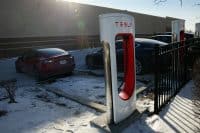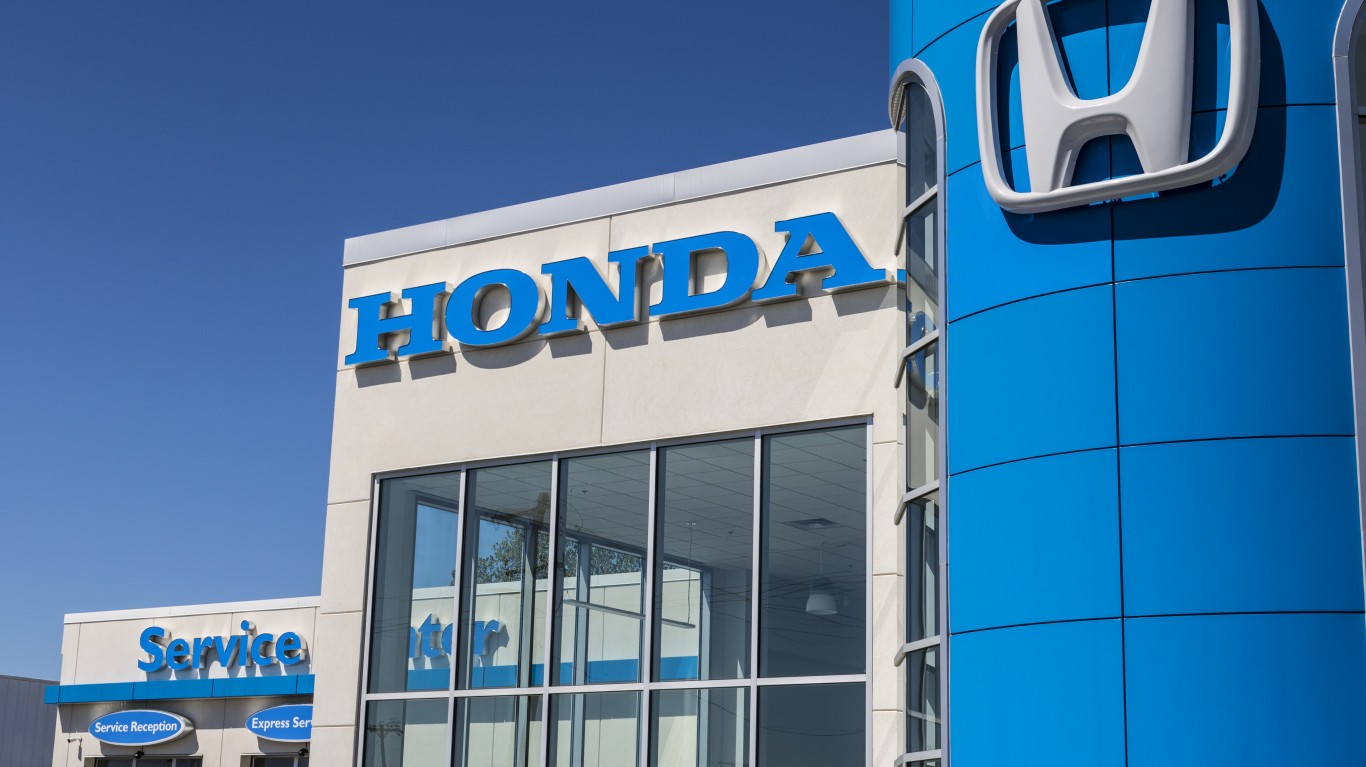 By the time Chrysler filed for Chapter 11 yesterday, it was no longer a large American company. Although the firm is private, most estimates are that the No.3 US car company may only have $35 billion in revenue this year. If that is true, it would not be among the top seventy companies in the Fortune 500. Its 2009 sales may be less than Apple’s (AAPL). With 54,000 employees, Chrysler has fewer workers than Cisco (CSCO).
By the time Chrysler filed for Chapter 11 yesterday, it was no longer a large American company. Although the firm is private, most estimates are that the No.3 US car company may only have $35 billion in revenue this year. If that is true, it would not be among the top seventy companies in the Fortune 500. Its 2009 sales may be less than Apple’s (AAPL). With 54,000 employees, Chrysler has fewer workers than Cisco (CSCO).
The news up to and including the Chrysler bankruptcy was “above the fold” in many newspapers and news websites. However, the amount of debt that the creditors and government were fighting over was only $6.9 billion. There are scores of American companies with larger debt loads.
The fascination that Americans have about this drama is more about Chrysler as a memory than what it is today. Forty years ago, the company was the fifth largest in America, almost as big as GE (GE), and larger than IBM (IBM) and AT&T. The car firm trio held three of the top five slots in terms of annual sales in the US. They were a significant part of national GDP and employed almost over 1.3 million people.
There is something about the American car companies that has frozen them in time. Perhaps it is the millions of cars that were bought over the last twenty years, most of which are still on the road. It may be that the public still remembers Lee Iacocca and Henry Ford II as though they were still running the companies. Whatever the reason, the idea that one or two of the car companies could go into bankruptcy caused a substantial amount of anxiety around the country. Perhaps if the economy were bustling, people would not care so much.
The Administration may have alleviated some people’s concerns about the auto industry by saying that Chrysler will be okay. Customers won’t be able to tell that Chrysler is in bankruptcy. The government will steer it through the Chapter 11 process in a matter of weeks. Not everyone agrees with this. Skeptics about the Administration’s plan may outnumber believers.
Bondholders who would not settle with the government and Chrysler are appropriately greedy. The money that they put into Chrysler debt came from pension funds and individual investors in many cases. It is not as if Citigroup (C) is the debtor left holding the check. Citigroup could, at least, petition the Fed to get back any money it lost on its Chrysler investment.
The stock market had absolutely no reaction to the Chrysler news. Shares in GM actually rose on the announcement by the President. It may be that Wall St. believes that GM’s creditors will give in, now that they have watched the Administration steam-roll the Chrysler debt holders. That is not likely. If the bankruptcy court gives Chrysler creditors even a brief hearing, GM’s creditors will see it as a sign that it is worth holding out for a better deal which may only require them to send attorneys to the federal bankruptcy court in New York City.
There is still a small chance that Chrysler could be forced into liquidation. Creditors may be able to convince a judge that all parties involved would do better if Jeep could be sold to Toyota (TM) and Dodge to VW. If that were to happen, it would not necessarily mean many lost jobs. Any firm that buys a car company’s assets still needs people to operate the assembly plants and design the cars. The jobs lost in liquidation might actually be fairly small.
No matter how the Chrysler bankruptcy works out, there will be no reason for Americans to mourn. Chrysler is not going to die. One or two of its brands may disappear but most of them have value. The cars may run on engines built by a Japanese car company and part of what is left of Chrysler may be operated by a firm headquartered in Germany. But, each new Jeep will still be a Jeep. The fact that it is the Jeep brand sells cars and trucks.
At the end of the year, some company or companies will be operating Chrysler in pieces or a single entity and those who were worried about its future will only be able to say “how can we miss you when you won’t go away?”
Douglas A. McIntyre
In 20 Years, I Haven’t Seen A Cash Back Card This Good
After two decades of reviewing financial products I haven’t seen anything like this. Credit card companies are at war, handing out free rewards and benefits to win the best customers.
A good cash back card can be worth thousands of dollars a year in free money, not to mention other perks like travel, insurance, and access to fancy lounges.
Our top pick today pays up to 5% cash back, a $200 bonus on top, and $0 annual fee. Click here to apply before they stop offering rewards this generous.
Flywheel Publishing has partnered with CardRatings for our coverage of credit card products. Flywheel Publishing and CardRatings may receive a commission from card issuers.
Thank you for reading! Have some feedback for us?
Contact the 24/7 Wall St. editorial team.



